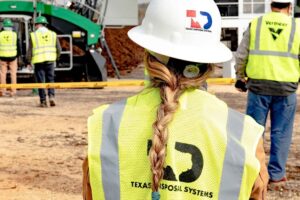2020 was a year that required rising to the occasion in unexpected ways for many businesses.
In early January, few expected the impact that would come from a pandemic, a rash of natural disasters, an economic shakeup and other changes in the US and around the world.
If 2020 taught American businesses anything, it’s that we need to be adaptable and prepared for a variety of situations to impact our bottom line, sometimes all at the same time.
As we look forward to 2021, it’s impossible to predict with perfect clarity what might be on the radar; however, we’ve put together some research on sustainability and the outlook for 2021. Here’s what you may expect:
1. Increased visibility for sustainability in corporate planning processes.
Consumers are highly focused on corporate actions and on ensuring they live up to their brand promises. They want the companies they choose to take a stand on issues that are important to them, especially when they relate closely to the company’s mission/purpose (topics like the environment, health and safety and more).
A single misstep can turn into a major issue with the proliferation of social media platforms, and 93% of CEOs believe their business’s customers will hold them responsible if there is a high visibility sustainability or environmental impact issue.
With this in mind, companies give themselves a strategic advantage by planning and implementing sustainable processes at the beginning of a project, rather than waiting until a crisis occurs to adjust their efforts. 81 percent of companies say they are more focused on sustainability, and in particular, their suppliers and supply chains, than they were three years ago.
It can be a competitive advantage to partner with knowledgeable service providers and ensure you’re handling projects, events or job sites in a responsible and sustainable manner. By doing this, you’re managing your job in a way that strategically supports your process and goals, rather than going back and putting quick fixes into place when a problem arises mid-process.
2. Adjustments in the construction sector.
In 2020, many construction projects slowed or were put on hold because of economic and pandemic uncertainty.
However, industry professionals are optimistic about the outlook for construction as the economy rebounds. They expect to see an increase in infrastructure projects and in satellite office spaces being built away from high-traffic, high-visibility corporate office locations.
Many construction teams and contractors/subcontractors have felt a strong economic impact over the past year. For these teams, sustainability is a pragmatic issue.
If responsible right-sized waste processing and site services solutions can save money and reduce overhead on a project, it’s a matter of practicality and good stewardship to put them into practice.
3. Increased awareness of the need for disaster preparation.
During 2020, the US experienced a record number of national disaster weather events. More than $95 billion in damages occurred during 22 major disaster events (major disasters are defined as those creating more than $1 billion in damages.)
Add that to the ongoing impact of the pandemic and it’s easy to see why many companies want to get their resources lined up in advance of a devastating hailstorm, hurricane or fire striking their community.
In 2021, expect to see more companies:
- Adding disaster management/emergency response personnel to their teams
- Asking to see business continuity plans for vendors
- Lining up resources and contacts in advance with disaster relief service providers
How does this connect to sustainability? Research shows that disaster preparedness and advance preparation can save resources, property and lives when a serious situation does occur. By having disaster relief resources ready to deploy when a crisis is imminent, you can mitigate the severity of its impact to your organization.
4. Continuing Focus on Reclamation.
Data from McKinsey shows that companies are focused on building a greener economy during this recovery and companies will be tasked with showing their investors their commitment to sustainability.
It’s not possible, or practical to fully eliminate waste on construction job sites. However, will many companies do well by considering ways to reduce their waste and reclaim materials that might otherwise be destined for landfills?
A few options to make the most of your construction site resources might include:
- Carefully measuring and allocating resources prior to the beginning of a project
- Returning or reselling excess materials at the end of a process
- Working with a waste processing partner to set up a designated area on the job site. In this space, you can scrutinize the materials and determine whether they should be recycled, reclaimed or sent to the landfill.
Teaming up with a knowledgeable waste processing partner can make the process of reclamation and reducing job site waste easier and more streamlined.
In conversations with your partner, you may be surprised at the many different ways to salvage materials and divert resources from landfills. For example, landscaping refuse (green waste) doesn’t have to be bagged and recycled; it can likely be put back safely into the environment as mulch or compost.
Some typical business areas may continue to experience a delay as we move through 2021. The event industry will likely wait until the latter part of the year to ramp up and may see lasting changes to its business model. Even for industries in this boat, sustainability will play a critical role as companies seek to safeguard their business and make the most of their income.
The adaptability and flexibility we learned in 2020, as well as the deepened partnerships we developed during unexpected situations, will stand us in good stead as we develop plans for a sustainability-focused 2021.





